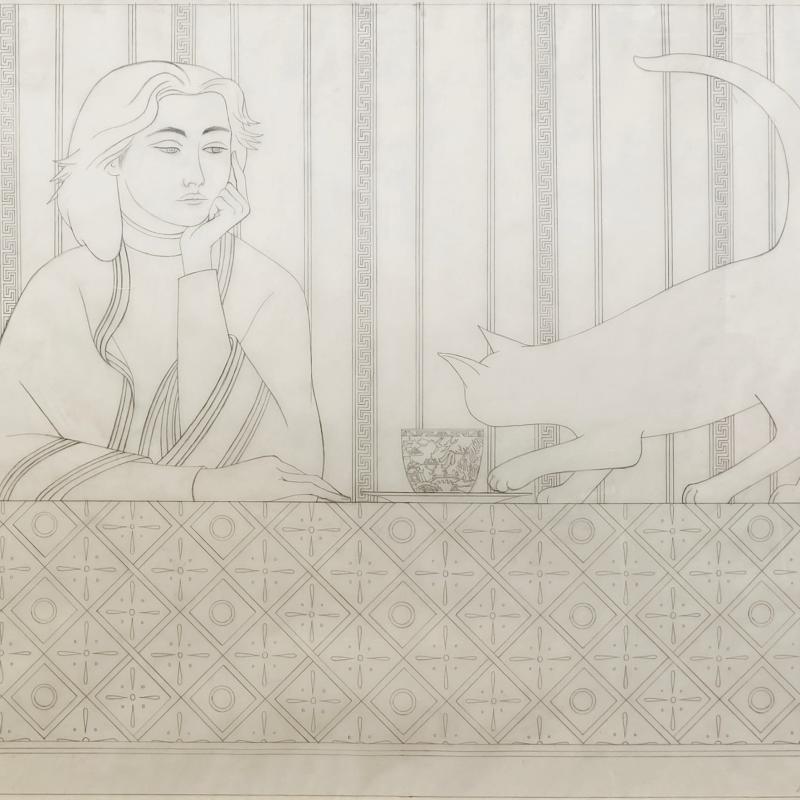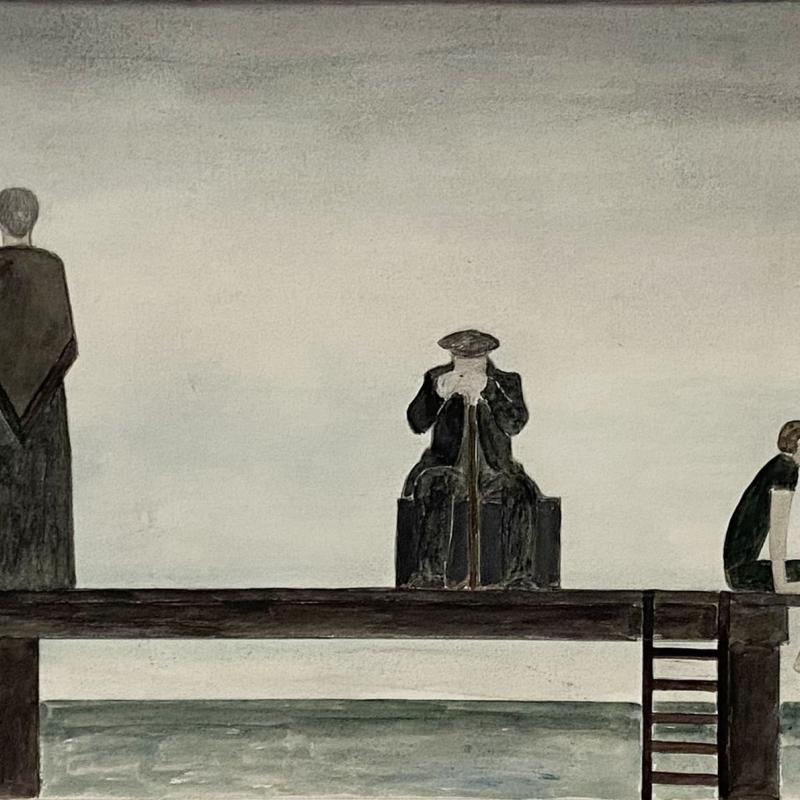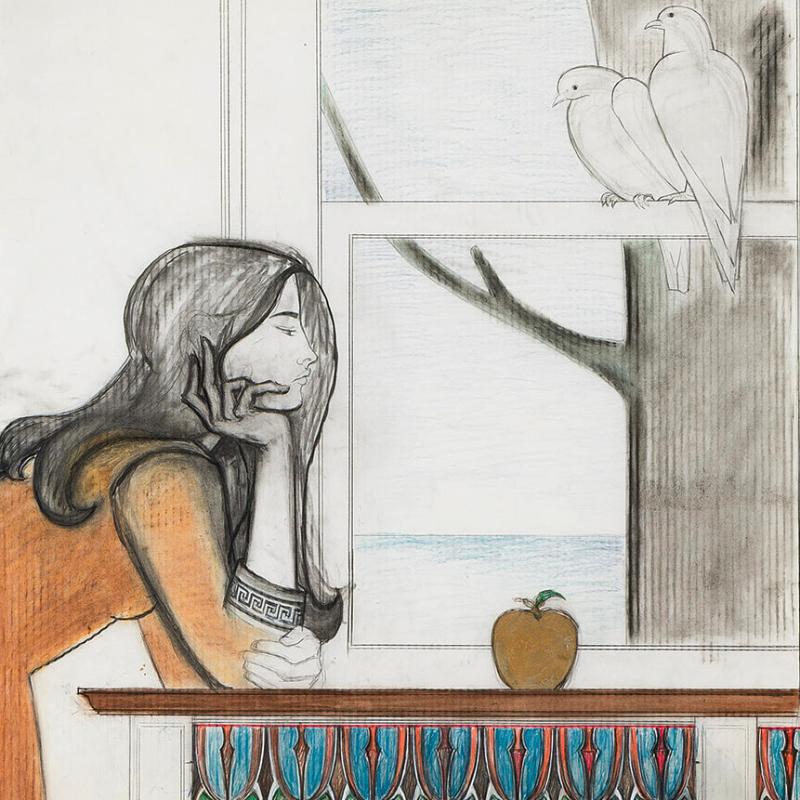-
 Will BarnetStudy for Meditation and Minou, 1979Graphite on vellum30 x 37 3/4 inches
Will BarnetStudy for Meditation and Minou, 1979Graphite on vellum30 x 37 3/4 inches
Framed: 39 5/8 x 47 5/8 inchesSigned: Will Barnet June 1979 lower right
-
 Will BarnetStudy for Old Man’s Afternoon, 1978Watercolor and pencil on paper11 x 19 inches (sight),
Will BarnetStudy for Old Man’s Afternoon, 1978Watercolor and pencil on paper11 x 19 inches (sight),
Framed: 24 x 32 inchesSigned: Will Barnet 78 lower right
-
 Will BarnetFinal Study for Atalanta, 1975Watercolor, color pencil, and graphite on vellum47 7/8 x 36 1/4 inches,
Will BarnetFinal Study for Atalanta, 1975Watercolor, color pencil, and graphite on vellum47 7/8 x 36 1/4 inches,
Framed: 56 1/2 x 46 1/2 inchesSigned: Will Barnet lower right
Overview
Will Barnet once said:
I like freshness, I don’t want to repeat myself, that is the one thing I avoid…I develop an idea and then I move on.
What is impressive about Will Barnet as an artist was his refusal to compromise and to go with the flow. He steadfastly has refused to imitate the trendsetting movements of the moment and instead has chosen to chart his own course. What is most impressive, however, is that Barnet has survived and perhaps flourished in spite of and most likely because of his resoluteness. He has had over 80 solo exhibitions. His works are represented in such notable museums as the Guggenheim, Metropolitan Museum of Art, the Museum of Modern Art, and the National Gallery in Washington, D.C.
He has been quoted as saying:
I didn’t compromise, ever…The old masters are still alive after 400 years, and that’s what I want to be”
Will Barnet began his career painting self portraits much like Rembrandt in his parents’ basement in Beverly, Massachusetts, a bedroom community north of Boston. During the 1930’s and throughout the depths of the Great Depression his works took on a tone of social realism. During the 1950’s and 1960’s when Abstract Expressionism was all the rage, and the 1970’s when Pop Art was fashionable, Barnet’s works remained stubbornly figurative in their representation and portrayal in both casual daily settings as well as in dreamlike ones. Barnet clearly saw what no one else did. Will Barnet has succeeded in charting a very independent route.
